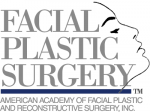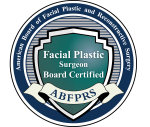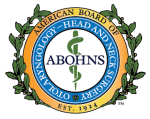Reconstructive Surgery in Orange County
Facial Reconstructive Surgery
Dr. Boeckmann is highly sensitive to the needs of a patient that has suffered facial trauma or skin cancer. Experience matters with facial trauma and reconstruction, which includes facial laceration and fracture repair, facial reconstruction, and scar revision. A distinct advantage of completing his residency in the only level 1 trauma center in Little Rock Arkansas, is that Dr. Boeckmann managed and operated on hundreds of cancer patients and facial trauma patients, both adult and pediatric. Dr. Boeckmann understands that cancer and facial trauma can change your life, and he is motivated to help you obtain the best results possible.
Skin Cancer
Repeated and prolonged exposure to ultraviolet light from sun exposure or tanning beds is damaging to our skin. The effects of these damaging rays are cumulative over our lifetimes. Unfortunately 1 in 5 Americans will develop skin cancer in their lifetime. The more exposure to UV light, the higher the chances of eventually getting some form of skin cancer. In addition, the fairer the skin complexion, the greater the risk of developing skin cancer.
The three most common types of skin cancer are basal cell carcinoma, squamous cell carcinoma, and melanoma.
Basal cell carcinoma. The most common form of skin cancer, basal cell carcinomas are typically localized cancers that rarely spread, but can be highly disfiguring if left unattended. These lesions frequently occur in sun-exposed areas of the face and body. They often appear as pimples or sores that fail to heal and may begin to bleed.
Squamous cell carcinoma. The second most common form of skin cancer, squamous cell carcinoma is most likely to develop on sun exposed regions of the face and body. Unlike basal cell carcinoma, squamous cell carcinoma can spread to other areas via the lymphatic system if left unattended. Early symptoms may include a firm, red nodule or a flat lesion with crusting or scaliness on the surface.
Melanoma. The least common form of skin cancer is melanoma, but it’s responsible for the vast majority of skin cancer deaths in America. It can form anywhere on the body and may develop along normal skin or within a previously normal mole. To detect melanoma, it’s important to be aware of the ABCDEs of pigmented lesions:
- Asymmetry. Asymmetry is a warning sign for melanoma. If you divide a malignant lesion in half with an imaginary line, the two halves will not match.
- Border. Most benign lesions have clean and even borders. If your mole has irregular or uneven edges, it may be a sign of early melanoma.
- Color. Benign moles tend to be one shade of brown, while melanomas contain different shades of brown, black, white, blue or red.
- Diameter. Melanomas commonly grow to be larger in diameter than a pencil’s eraser, though they may be smaller when they are first diagnosed.
- Evolving. Benign moles do not evolve – they stay the same over time. If your mole starts to change in any way, it should definitely be evaluated by a dermatologist.
Skin Cancer/ MOHS Reconstruction
Dr. Jacob Boeckmann is skilled in the excision of skin cancers, however, the location of some skin cancers may be better treated with Mohs Micrographic Surgery. Mohs surgery is a modified form of surgical excision that provides for an accurate assessment of the completeness of tumor removal and, as a result, has a very high cure rate and may be more tissue-sparing than conventional surgery. It is performed by a fellowship-trained dermatologist, who is trained to microscopically evaluate the excised tissue him/herself. The immediate microscopic evaluation ensures immediate cancer clearance. Thus, Mohs surgery is usually reserved for those instances where it is very important to preserve normal skin (i.e., eyes, nose, lips, ears, etc.) or where other types of treatments have either failed or would not be as successful.
Following excision by the Mohs surgeon, Dr. Boeckmann then performs facial reconstructive surgery on the defect created. This requires a team approach between Dr. Boeckmann and the Mohs surgeon. A coordinated treatment plan is always made, and your excision and reconstruction are performed on the same day.
Scar Revision
Unsightly, disfiguring scars, or defects can be disconcerting and often devastating to one’s self-image. Surgical treatment for scars and skin defects can be performed to remove unsightly or disfiguring scars or blemishes. Any incision or trauma to the skin, whether deliberate or accidental, heals by producing scar tissue. This simple fact is frequently misunderstood by individuals who think that a plastic surgeon can make an incision and eliminate existing scars.
The goal of a scar revision is to replace an unsightly or disfiguring scar with a better scar. The ideal scar is one which is narrow, level and blends with the surrounding skin surface, and causes no contracture or pull on the surrounding structures. The final appearance however is dependent on many factors, one of which is the patient’s own healing capability.
A scar revision is often utilized to correct scars that are:
- Wide
- Crossing natural creases or facial contour lines
- Elevated above the adjacent skin
- Depressed below the adjacent skin
- A different color than adjacent tissues
The passage of time is the best, the kindest, and, in the long run, the simplest treatment to give to any scar of recent origin since most will undergo spontaneous improvement if given enough time to do so, often 6 to 18 months. A decision regarding scar revision may be delayed until this time has elapsed. However, scars which cause distortion of normal structures (eyebrows, lips, eyelids, nostrils) may be repaired earlier because little or no improvement in the basic problem can be anticipated with the passage of time.


